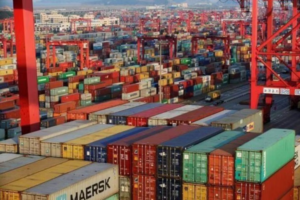As air cargo evolves, leaders Chandrakala Bobba and Gangadhar Reddy share how cold chain precision, digital transformation, and multimodal integration are shaping a more resilient, sustainable, and customer-focused logistics future.

Cold chain under pressure
Cold chain success depends on precision, not just refrigeration.
Balancing speed, compliance, and cost efficiency in airport cold chain operations is no small feat. Chandrakala Bobba, Director, Bobba Group, describes the landscape as a “regulatory labyrinth, an intricate mesh of global, national, and industry-specific standards that demand harmonised documentation, chain-of-custody protocols, and exhaustive audit trails.” She warns, “Any lapse risks not only product integrity but also reputational and financial consequences.”
Operational velocity is further challenged by capacity volatility. “Dedicated cold rooms are often insufficient during seasonal or spike demands,” Bobba explains. “Prioritisation by temperature band rather than commodity type can sometimes lead to inefficiencies or contamination risks.” High energy costs and a shortage of skilled personnel compound the issue, especially during high traffic periods. “The high capital and recurring energy costs of multi-temperature cold chambers further strain both operators and clients,” she adds.
Greening the cold chain
Sustainability is becoming central to cold chain evolution. Bobba shares that their approach integrates “energy-efficient refrigeration systems, renewable energy sources, and eco-conscious building materials to reduce environmental impact while maintaining stringent temperature control.” Facilities now feature advanced insulation materials like phase-change composites and recycled fibres, which help stabilise temperature and reduce energy load.
“Green compliance is another pillar,” she says, citing the adoption of “green refrigerants and sustainable operating protocols aligned with evolving environmental mandates.” Collaboration across logistics providers, tech developers, and regulators is accelerating best practices in energy conservation and packaging. “This enhances both sustainability credentials and customer trust.”
Resilience amid trade shifts
In response to global trade shifts and recent U.S. tariff increases, cold chain operators are building resilience through diversification and digital transformation. “Supply networks are being recalibrated away from tariff-impacted geographies toward emerging hubs in Southeast Asia, Latin America, and nearshoring within the U.S.,” Bobba explains.
Digital visibility tools now enable “real time temperature traceability and compliance monitoring across extended supply chains.” She adds, “By reinforcing inventory buffers, adopting dynamic procurement models, and nurturing local supplier ecosystems, operators are moving beyond reactive measures.” The result is a more adaptive, technology driven framework that ensures continuity and cost stability.
Air cargo’s expanding horizon

Air cargo must integrate seamlessly with multimodal logistics.
Gangadhar Reddy, Founder & CEO, Logicarts, sees the air cargo sector entering a transformative phase. “The air cargo sector is entering a period of transformation driven by digitalisation, sustainability goals and changing trade dynamics,” he says. Customers now expect “speed, visibility and reliability across every stage of the supply chain.”
To meet these expectations, logistics providers are investing in data-driven operations and forging stronger partnerships with carriers and freight forwarders. Reddy notes, “Our new air wing is focused on helping airlines reach new markets efficiently while giving shippers better access to capacity and service consistency.”
The evolving role of GSSAs
As airlines increasingly turn to General Sales and Service Agents (GSSAs) for market expansion, the role is evolving. “The GSSA role today goes far beyond selling cargo space,” Reddy explains. “Airlines are looking for partners who understand local markets, can manage complex regulatory environments and deliver real-time business intelligence.”
He emphasises the importance of combining sales capability with operational expertise and technology integration. “We already manage multimodal logistics networks, so when we represent an airline, we do it with a full understanding of what customers need from end to end,” Reddy says. “That’s what makes our approach more consultative and solution-orientated rather than transactional.
Multimodal synergy: The future of cargo
Looking ahead, air cargo is expected to become a key link in broader multimodal supply chains. “Air cargo will increasingly become a key link in a larger multimodal chain rather than a standalone service,” Reddy predicts. Shippers want “seamless movement across air, road and sea with unified tracking and cost efficiency.”
He adds, “By integrating these services, we can offer airlines and customers a single point of coordination, creating real efficiency across the supply chain.” With cold chains becoming smarter and air cargo more connected, the logistics ecosystem is poised for a more agile and resilient future.











